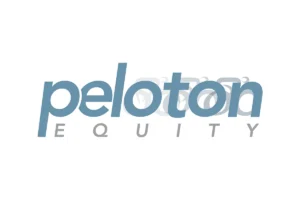5 Ways a Medical Scribe is Shaping the Future of Healthcare
Medical Scribing is the New “Virtual Clinical Assistant” for Doctors and Their Teams to Improve Care
Choctaw Indian Nation in rural Oklahoma and Onpoint Healthcare Partners, from Dallas, Texas, recently join team healthcare forces to combat doctor and office team burnout with artificial intelligence (AI) medical-scribe technology.
The partnership has resulted in five major “doctor and team” benefits in only a few months.
- Improved Doctor & Team Communication from EHR Integration
- Better Rural Access to Care
- Bilingual Capabilities for Maximizing Patient Needs
- Reductions in Doctor & Team Burnout (Improved Retention)
- Improved Care from Quality Note-Editing and Clinical Accuracy
What is a Medical Scribe?
The company’s new “IRIS.ai™” medical scribe launch last month is making heavy waves for Choctaw Indian Nation, the healthcare industry, and the medical scribe competition. Let’s see what waves are hitting the hardest.
1. Improved Doctor & Team Communication from EHR Integration
According to healthcare expert John Lynn at Healthcare IT Today, “OnPoint Healthcare Partners is the latest ambient clinical voice technology we’ve found that combines expert human authors with AI to take one of the annoying burdens off doctors: writing clinical notes. The medical scribe and AI clinical note technology captured from the doctor/patient interaction, uploaded securely to their cloud services, and processed by a team from around the world to generate notes in a time ranging from less than an hour to next-morning delivery. Quick turn-around is particularly important for in-patient settings, but this isn’t as true in most ambulatory practices.”
“Watch the full video for details about how the service works and compare it to other ambient clinical voice-related technologies like Nuance’s Dax Express and Ambience Healthcare to name a few,” states John.
The AI technology accurately documents and sends clinical notes in real-time, and is been implemented by Dr. Jason Hill, the Chief Medical Officer of Choctaw Nation Health Services Authority (CNHSA) in Durant, Oklahoma, who is known for his expertise in leading and growing the Nation’s tribal and community healthcare services, while developing the next generation of physicians and teams to serve the Choctaw Nation.
IRIS.ai™ also offers provider-specific templates for EHR customization, and an advanced encryption process, available for both Android and Apple IOS mobile devices. This allows medical scribing for doctors and department teams to leverage fast and efficient communication to meet the needs of patients, while keeping up with medical systems information in real time.
2. Better Rural Access to Care
“Access to patient care for a high volume of tribal patients is important for us due to our community growth and overall demand for healthcare services in recent years with COVID-19, as well as rising rates of chronic conditions like type 2 diabetes,” said Dr. Hill.
3. Bilingual Capability for Maximizing Patient Needs
“The technology is making it possible for tribal health, Spanish-speaking doctors, and non-bilingual doctors everywhere to dictate notes with a 98.6% accuracy, quickly, and efficiently. It is reducing wait times for high-volume providers that may otherwise burn out doctors in their region. If that’s a problem that continues for providers, it will result in an absorbingly high cost of time and money for recruitment and retention while still not fixing the doctor administrative problem at hand.” said Jim. “Doctors go into medicine with a passion to heal. Not to be data entry specialists and burnout.” Jim stated.
4. Reduction in Doctor & Team Burnout
In a recent article published in the American Medical Association (JAMA Network) titled “Burnout, Professionalism, and the Quality of US Health Care,” Dhruv Khullar, MD, MPP, from the Departments of Population Health Sciences and Medicine at Weill Cornell Medicine, stated, “the time spent on meaningful work is a key predictor of professional well-being.”
Khullar goes on to note that physicians often feel disconnected or resentful towards organizations that fail to support their autonomy, reasonable work hours, and healthy relationships.
Khullar states that “achieving a major reduction in administrative burdens requires coordination across health care organizations, payers, vendors, and technologists.”
Dr. Hill at CNHSA, recognizes and understands the importance of alleviating administrative burdens and reducing burnout to ensure that physicians and the team departments can continue to provide high-quality patient care.
By reducing the workload on doctors and the stress it creates in their lives, hospitals can improve retention rates, reduce recruitment costs, and create a clinic setting that’s personable for both physicians and patients.
“In six months, we saw our tribal visits in Southeast Oklahoma increase, largely due to our adoption of the AI learning technology and mobile app into our clinics.” said, Hill.
5. Improved Note Editing & Accuracy
IRIS Virtual Clinical Assistant™, which includes OnPoint’s existing flagship IRIS.ci solution, has successfully produced over 500,000 clinical notes, while boasting the healthcare industry’s highest accuracy clinical rate at 98%. The result is that a provider will finish reviewing and approving an IRIS note in less than 2 minutes, on average.
“As we implement team medical scribes, we are finding out many doctors and department teams are burning out because they are still manually inputting each note taking 10-20 minutes per note,” mentions, Jim.
Medical Scribing is the Future of Healthcare
“We’re proud to be at the doctor-scribing forefront of this exciting new AI technology, and we’re committed to continuing to innovate and improve our healthcare AI scribing services, for tribal healthcare families like CNHSA, minority groups, rural areas, small clinics, ICUs, specialties, home health, in-patient settings, and eventually to all providers and physicians globally, to help bring back the joy to medicine,” says Jim.
Try a Free Medical Scribe Demo
If you are a provider or physician in the U.S., Canada, Europe, Australia, Mexico, South or Latin America, or India, and would like to schedule a free IRIS. ai demo, please visit IRIS Virtual Clinical Assistant.
About Choctaw Indian Nation
To learn more about Dr. Jason Hill and the Choctaw Nation, please visit The Choctaw Nation of Oklahoma website.
Are you a doctor or provider and would like a free medical scribe demo?
Author: Patrick Menzel – Internal Profits



